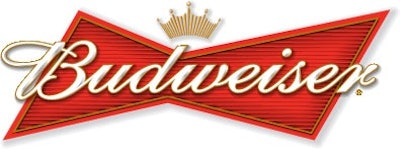
The throne of the King of Beers has been moved to Europe, where royalty has been embraced for centuries. The King is bought, long live the King. The Belgium brewer Inbev’s takeover of A-B creates at least the fourth-largest (maybe third) consumer products company in the world; on scope alone, the deal is a goldmine for analysis and reflection, beyond those two parties. And, as is always the case with the consumer products industry, packaging constitutes a rich vein.
It was the Budweiser brand that Inbev coveted. Regardless of how one chooses to define brand, there is no other component more tangible than the packaging. In many instances, the functional differences among competing branded products is not great, but it’s the packaging that’s the differentiator. Packaging presents and represents in physical form aspects of the brand that imprint the minds of consumers.
Packaging is a brand-builder, and, therefore, should be a factor in a suitor’s acquisition strategy. That’s equally true of the post-acquisition strategy, given that acquisitions are made to parlay synergies into growth and profits. Major strategies for doing that include global, local market, and brand invention, each a reaction to cultural, political, and economic influences.
Global market
The branded product is distributed, essentially unaltered, in various markets around the world. That is to say, an accustomed user of that branded product would recognize it by appearance and function, wherever in the world she might encounter it. Coca-Cola—it of the universal, secret formula—is the classic example.
But, just because the branded product does not undergo substantive change from market to market does not dismiss all market-specific variables that impact packaging. The transportation infrastructure, for example, might require that the packaging be more protective. Should such protection be built into the primary, secondary, or tertiary packaging, or some combination thereof?
Factors related to use/consumption of a global branded product can differ among markets, affecting such fundamental issues as package sizes and whether multipacks are feasible. It doesn’t require many examples to make the point that the concept of the global branded product is relative and that variations in packaging can’t be totally avoided.
A discussion involving global branding and packaging is obliged to at least allude to sustainability, and for good reason. However diverse or similar the markets around the world, it’s the same world. That fact, and the linkages it implies, makes sustainable packaging the major challenge/opportunity that it has become.
Regulations governing sustainable packaging differ around the world, from stringent to nonexistent, as do the relative focuses placed on reduction, recycling, and reuse. But, the issue is more than just complying with the various regulations and trying to minimize their fragmenting effects on global brand strategy. Additionally, the brand owner should not expose itself to charges of exploiting markets where regulations are slack. Instead, the global brand strategy should bespeak a consistently strong commitment to packaging sustainability, although specific implementation might have to differ across markets.
Local market
Often, the brand owner has to modify the product, distinct from the package; afterward, the package must perform all its traditional functions of protection, communication, and utility. All McDonald’s around the world are instantly recognizable, even though that same uniformity can’t be said of menus.
Regarding packaging, the task is how to hold certain components constant, most notably the brand name and logo, while matching other components to the dictates of the marketplace. A particular, color, for example, can have disparate connotations and associations due to cultural norms.
Cultural norms can also bear upon how the product is depicted on the package, and in the case of depicted people, whether gender makes a difference. Promotional copy, too, can be affected because different cultures differ as to the propriety of claims—as opposed to their truths. Moreover, a factor such as the average education level impacts instructional copy and the optimal mix of words and symbols.
Brand invention
Sometimes, the best, if not only recourse is to invent a new brand for a particular market. Aside from the obvious departure from the brand name, however, the new brand should be as similar to or different from its parent as market-specific circumstances warrant. Whatever that degree, the packaging should embody it effectively.
One condition that can justify the strategy of brand invention is language. The predecessor brand name is difficult to pronounce. Or, that brand name translates to something, that, at best, is comical or ridiculous; consider Chevrolet‘s misadventure with its Nova in South American markets where “no va” in Spanish means "it doesn‘t go." Or, the market utilizes a different alphabet. Or, the brand name is not available in a particular market because it's registered to another company. Regardless of the justification for brand invention, no wholesale transfer of the packaging should be made without regard for the aforementioned market-specific circumstances.
Don’t take home for granted
Most acquisitions of U.S. brands by foreign companies don’t receive the media coverage afforded the Inbev/A-B deal. The South African Brewery’s acquisition of the Miller Brewery Company was far less bruited. It’s a fact that many brands that are mainstays in U.S. households are foreign-owned. Among those brands are Gerber, Woolite, Ben & Jerry's, and Clearasil.
Nonetheless, it’s prudent for the domestic and the foreign brand to consider whether and how the acquisition will affect the domestic market. Is the brand so affiliated with the domestic market that a sizable number of consumers feel conflicted between brand loyalty and patriotism? A-B, arguably, is such a brand, and conceivably there are others.
Narrowing the discussion to packaging, how should it be utilized if, for example, consumers begin imagining differences in an acquired brand? Under such a scenario, a consumer communications campaign would be needed; however, acquisitions frequently are accompanied by a round of cuts to eliminate costs. Thus if advertising, public relations, and other components of the promotions mix are squeezed, the duty to combat the misconceptions could fall disproportionately on the packaging.
It’s a small world, after all
Acquisitions, big or small, involving international parties, are the manifestations of globalization: the sourcing, manufacturing, marketing, and distribution of products based on the comparative advantages of the various countries. No publicly-held company can exempt itself from participation, whether as the acquirer or the acquired. There’s a built-in irony, in that the more successful the brand, the more attractive it is as an acquisition, as well as the more positioned it is to pursue acquisitions. And, as mentioned at the onset, brand, product, and packaging are inextricably linked.
Packaging professionals need a working knowledge—at least at the conceptual level—of world markets and globalization. In relation to that, attendance at international shows, such as Interpack (Dússeldorf, Germany) and Pack Expo (Chicago, Las Vegas), is a sound investment.
In the final analysis, an acquisition is like a marriage, success achieved through the right kind of thought and judgment during the courtship, and afterward, the melding of individual personalities and the avoidance of those dreaded irreconcilable differences. So, can two beer giants find true love together? We’ll just have to wait and see what’s on tap.
Before becoming a packaging consultant, Sterling Anthony worked for Fortune 500 food, healthcare, and automotive companies, and has taught packaging at the university level. He welcomes your comments by phone, 313/531-1875 or by e-mail, [email protected]. His Web site is www.pkgconsultant.com.
It was the Budweiser brand that Inbev coveted. Regardless of how one chooses to define brand, there is no other component more tangible than the packaging. In many instances, the functional differences among competing branded products is not great, but it’s the packaging that’s the differentiator. Packaging presents and represents in physical form aspects of the brand that imprint the minds of consumers.
Packaging is a brand-builder, and, therefore, should be a factor in a suitor’s acquisition strategy. That’s equally true of the post-acquisition strategy, given that acquisitions are made to parlay synergies into growth and profits. Major strategies for doing that include global, local market, and brand invention, each a reaction to cultural, political, and economic influences.
Global market
The branded product is distributed, essentially unaltered, in various markets around the world. That is to say, an accustomed user of that branded product would recognize it by appearance and function, wherever in the world she might encounter it. Coca-Cola—it of the universal, secret formula—is the classic example.
But, just because the branded product does not undergo substantive change from market to market does not dismiss all market-specific variables that impact packaging. The transportation infrastructure, for example, might require that the packaging be more protective. Should such protection be built into the primary, secondary, or tertiary packaging, or some combination thereof?
Factors related to use/consumption of a global branded product can differ among markets, affecting such fundamental issues as package sizes and whether multipacks are feasible. It doesn’t require many examples to make the point that the concept of the global branded product is relative and that variations in packaging can’t be totally avoided.
A discussion involving global branding and packaging is obliged to at least allude to sustainability, and for good reason. However diverse or similar the markets around the world, it’s the same world. That fact, and the linkages it implies, makes sustainable packaging the major challenge/opportunity that it has become.
Regulations governing sustainable packaging differ around the world, from stringent to nonexistent, as do the relative focuses placed on reduction, recycling, and reuse. But, the issue is more than just complying with the various regulations and trying to minimize their fragmenting effects on global brand strategy. Additionally, the brand owner should not expose itself to charges of exploiting markets where regulations are slack. Instead, the global brand strategy should bespeak a consistently strong commitment to packaging sustainability, although specific implementation might have to differ across markets.
Local market
Often, the brand owner has to modify the product, distinct from the package; afterward, the package must perform all its traditional functions of protection, communication, and utility. All McDonald’s around the world are instantly recognizable, even though that same uniformity can’t be said of menus.
Regarding packaging, the task is how to hold certain components constant, most notably the brand name and logo, while matching other components to the dictates of the marketplace. A particular, color, for example, can have disparate connotations and associations due to cultural norms.
Cultural norms can also bear upon how the product is depicted on the package, and in the case of depicted people, whether gender makes a difference. Promotional copy, too, can be affected because different cultures differ as to the propriety of claims—as opposed to their truths. Moreover, a factor such as the average education level impacts instructional copy and the optimal mix of words and symbols.
Brand invention
Sometimes, the best, if not only recourse is to invent a new brand for a particular market. Aside from the obvious departure from the brand name, however, the new brand should be as similar to or different from its parent as market-specific circumstances warrant. Whatever that degree, the packaging should embody it effectively.
One condition that can justify the strategy of brand invention is language. The predecessor brand name is difficult to pronounce. Or, that brand name translates to something, that, at best, is comical or ridiculous; consider Chevrolet‘s misadventure with its Nova in South American markets where “no va” in Spanish means "it doesn‘t go." Or, the market utilizes a different alphabet. Or, the brand name is not available in a particular market because it's registered to another company. Regardless of the justification for brand invention, no wholesale transfer of the packaging should be made without regard for the aforementioned market-specific circumstances.
Don’t take home for granted
Most acquisitions of U.S. brands by foreign companies don’t receive the media coverage afforded the Inbev/A-B deal. The South African Brewery’s acquisition of the Miller Brewery Company was far less bruited. It’s a fact that many brands that are mainstays in U.S. households are foreign-owned. Among those brands are Gerber, Woolite, Ben & Jerry's, and Clearasil.
Nonetheless, it’s prudent for the domestic and the foreign brand to consider whether and how the acquisition will affect the domestic market. Is the brand so affiliated with the domestic market that a sizable number of consumers feel conflicted between brand loyalty and patriotism? A-B, arguably, is such a brand, and conceivably there are others.
Narrowing the discussion to packaging, how should it be utilized if, for example, consumers begin imagining differences in an acquired brand? Under such a scenario, a consumer communications campaign would be needed; however, acquisitions frequently are accompanied by a round of cuts to eliminate costs. Thus if advertising, public relations, and other components of the promotions mix are squeezed, the duty to combat the misconceptions could fall disproportionately on the packaging.
It’s a small world, after all
Acquisitions, big or small, involving international parties, are the manifestations of globalization: the sourcing, manufacturing, marketing, and distribution of products based on the comparative advantages of the various countries. No publicly-held company can exempt itself from participation, whether as the acquirer or the acquired. There’s a built-in irony, in that the more successful the brand, the more attractive it is as an acquisition, as well as the more positioned it is to pursue acquisitions. And, as mentioned at the onset, brand, product, and packaging are inextricably linked.
Packaging professionals need a working knowledge—at least at the conceptual level—of world markets and globalization. In relation to that, attendance at international shows, such as Interpack (Dússeldorf, Germany) and Pack Expo (Chicago, Las Vegas), is a sound investment.
In the final analysis, an acquisition is like a marriage, success achieved through the right kind of thought and judgment during the courtship, and afterward, the melding of individual personalities and the avoidance of those dreaded irreconcilable differences. So, can two beer giants find true love together? We’ll just have to wait and see what’s on tap.
Before becoming a packaging consultant, Sterling Anthony worked for Fortune 500 food, healthcare, and automotive companies, and has taught packaging at the university level. He welcomes your comments by phone, 313/531-1875 or by e-mail, [email protected]. His Web site is www.pkgconsultant.com.


























